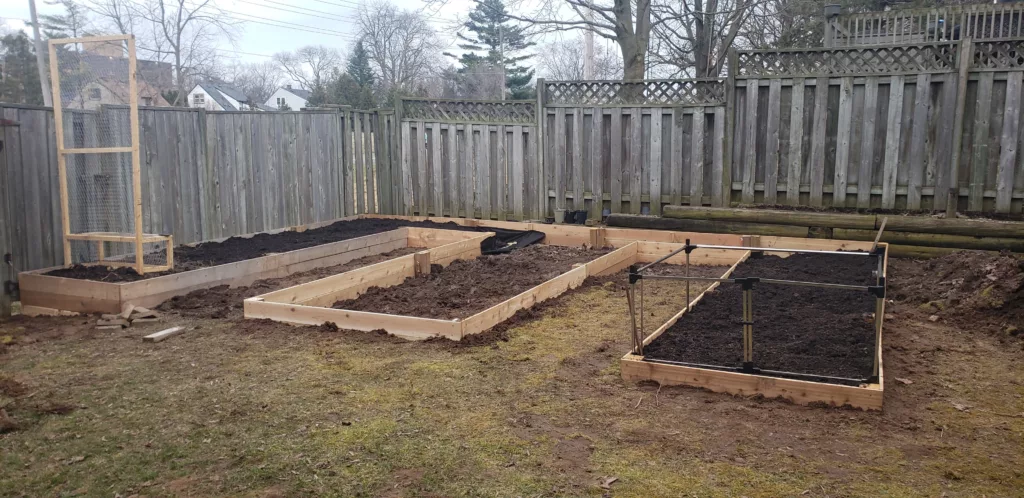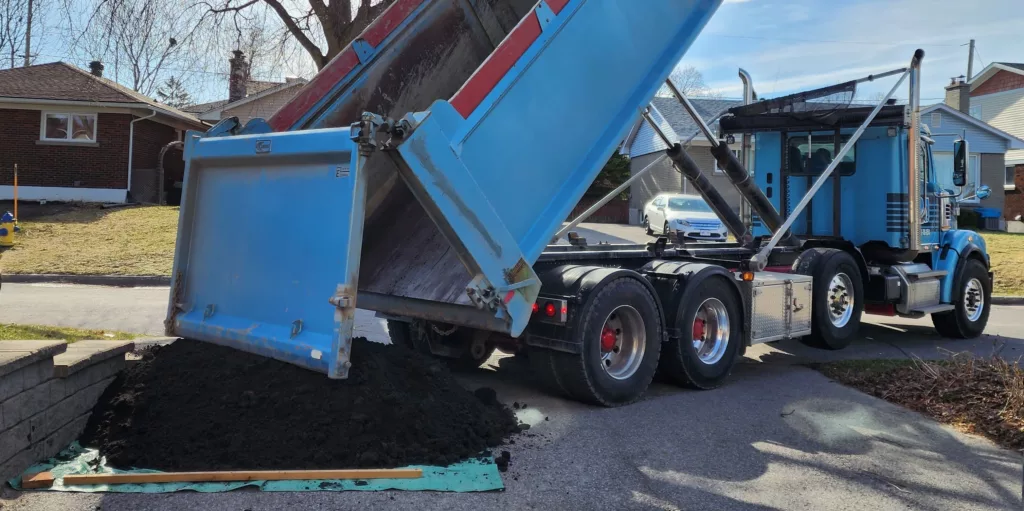With so many soil types available on the market, it can get overwhelming trying to know which one you need.
There are two different types of soil that we want to take you through today. The first is the types of soil that you find directly in the ground, whether you are growing in your backyard or at an allotment.
Next we will talk about a few different bagged soil options that you can find at the garden centres. With so many options available on the market, it is easy to feel overwhelmed and under qualified, however it is quite simple! Once you have finished reading through this article, you will feel confident in your soil purchases!
There are 6 main soil types in Canada that you will find in your backyard or allotment.
You may be choosing to garden in containers, or in raised beds, and think that knowing the soil type in your backyard doesn’t matter. However, it’s important to know for a couple of reasons. The first, is that you might still find yourself growing in the ground for perennial or annual flower gardens. The second is that knowing your soil type will help you determine how well your property drains, which is important for raised beds and for overall flood assessments.
Before we get into this I wanted to note that some of the information below I learned from Frankie Flowers. His book Food to Grow was one of the first books I bought as a new gardener and it taught me so much. One of the things it taught me was the importance of soil types.
So without further ado, here are the 6 types of soil you will find in your yard, where they are mainly found, and how you can test your soil at home to understand what type you have!
Loam
A gardener’s favourite type of soil! Loam is a nearly equal mix of clay, sand and silt. This soil type allows water, air and roots to move with ease. This is the best soil for vegetables and raised bed gardens. Loam soil can be found all across Canada, but, in particular, it can be found in Southern Quebec.
Texture Test: Take a handful of your soil, moisten it and roll it into a sausage shape. If it feels slightly gritty, holds its shape but also can break apart easily, it is primarily loam. The texture should resemble chocolate cake!
Clay
It is made up of tiny particles that make it retain high amounts of moisture. Due to the tiny particles, the air flow is minimal, as is water drainage. Clay compacts easily, so roots have a difficult time growing in this soil. For any of our friends in the GTA, you will be highly acquainted with clay soil, as will other gardeners along the St. Lawrence River.
Texture Test: Take a handful of your soil, moisten it and roll it into a sausage shape. If it feels sticky and can easily be formed into other shapes, then it is primarily clay.
In the photo below, the middle garden has clay soil in it, while the outer two gardens have been filled with garden soil.

Continue your garden education with these articles:
- How to Protect Your Plants from Cucumber Beetles
- How to Grow Cucumbers From Seed to Harvest
- What the Calgary Water Main Break Can Teach Us In Our Gardens
- Drowning in Kale? Here are 9 Ways to Use Your Harvest!
- How to Grow Bush Beans from Seed to Harvest
Sand
Sand is made up of large particles and feels coarse to the touch. Because of these large particles, sand drains extremely well, and quickly loses nutrients. This soil is found in many areas located near bodies of water or areas with low rainfall and high evaporation such as the Okanagan Valley
Texture Test: Take a handful of your soil, moisten it and roll it into a sausage shape. If it feels gritty and falls apart easily, then it is primarily sand
Silt
Silt is the in-between of sand and clay and is made up of medium size particles. Silt soils can be fertile and drain well, but also can compact, leading to poor drainage. This soil is found in areas such as Alberta, Saskatchewan and Manitoba due to their history with glaciers. It is also found in the Great Lakes and St. Lawrence region.
Texture Test: Take a handful of your soil, moisten it and roll it into a sausage shape. If it feels smooth and silky and doesn’t break apart when rolling it, then it is primarily silt
Chalk
Chalk soil has a similar particle size to silt soils, however it is high in calcium carbonate and is alkaline. This soil has a distinctive white/light grey colour. It is well draining but nutrient poor. Chalk soil originates from ancient sea floors where shells and marine skeletons decomposed over millions of years, and therefore is not common in Canada.
Peat
Peat soil is almost never found in the home garden unless it is brought in. This soil comes from wetlands/peatlands and is made of partially decomposed organic matter. This soil is mainly used in seed starting mixes or soil mixes, however, it is a heavy contributor to greenhouse gases when it is dug up so we do not recommend using this soil type.
If you’re enjoying this article, sign up to our newsletter for even more great content!
With so many bagged and mixed soils on the market, let’s discuss the types:
Manure
Pretty straight forward! It is the poop of animals, often sheep or cow. Best for large gardens, and not for pots, as it is high in nitrogen and can burn plants in pots. Due to it’s high nutrient content, mix 1 part manure to 2 parts garden soil.
Lawn Soil
Used for reseeding lawns and often have fertilizers in them to promote new growth.
Triple Mix
The recipe of triple mix varies by company sold and often is a “trade secret”, but is usually made of peat, compost and top soil. Often this is used for improving existing garden soil.
Black Earth
Usually consists of black peat (not true black earth), a low quality peat that compacts and loses nutrients easily. Black Earth is sold mainly for its colour, since it looks like high quality soil. We highly recommend NOT buying this due to its poor quality and environmental implications.
Container Soil
Made specifically for growing in pots as the mixture allows for better drainage.

Garden Soil
Typically used for in ground gardens or raised garden beds. A good mix will have clay, silt and sand in it (also known as loam). Good for vegetable gardens!
Topsoil
Taken from the top 30cm of land, this usually is sand and clay combined and is good for grading your lawn, filling holes or prepping for grass.
Compost
It’s made from a mix of decaying material and is very high in nutrients. It can be made at home, or picked up through your municipality. Compost is great for adding to your raised garden beds as new soil or mixed in to existing soil. Compost also is a great mulch on raised beds and in-ground gardens.
Seed Starting Mix
A soilless mixture that is sterile, it’s used to start seeds. We don’t ever buy this product because it is expensive, often doesn’t come into stores on time for when we want to start seeds, and it contains peat in it – which is very environmentally damaging. Instead, we make our own seed starting mix which is much more economical, and environmentally friendly.
Through this research, what we discovered is, that depending on your country, there appear to not be much regulation on bagged soil and its composition. Therefore, the following explanations of soil are a guideline.
An important item to note though, is that most bagged soils are made of similar compositions. Triple mix, container soil, or potting soil are essentially the same thing (or even “raised bed” soil). All of these are useable in gardens, raised beds or containers, so you can decide which to buy based on bag size and price (how we usually decide on soil, if we ever buy bagged soil)
Now that you have a better understanding of the types of soil that exist on the market, check out this article all about the ways you can buy soil (from bagged to bulk), their pros and cons, and which one is the most budget-friendly.









